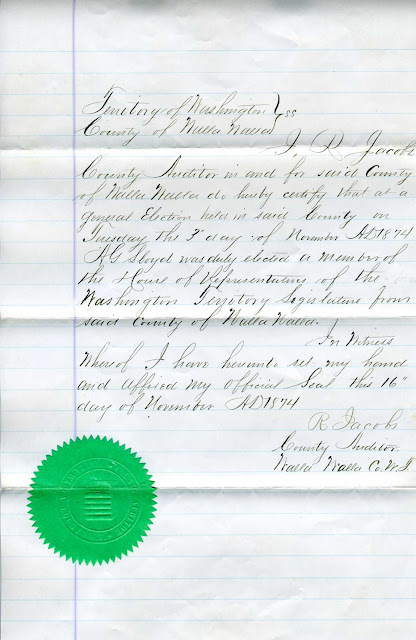I am not sure where genealogy passion began in my family, but definitely my mother, Helen Lloyd Shaffner, had an interest & passion for her family history. It was my mother who collected and inherited information. I grew up hearing stories about her ancestors and placing flowers on graves. So it was natural that I listened and eventually discovered I had a passion for genealogy. Although I wish I had listened, written down what was told and asked more questions.
The one who told the stories, and collected the memorabilia, thus creating my interest.
Helen Lloyd Shaffner
I believe her collection began with my 3rd great grandparents, Nancy Walker Lloyd and her husband John Lloyd. This couple married in 1823 in Caswell County, North Carolina, moved to Clay County, Missouri in 1824 and went to Oregon in 1845. But along the way, memorabilia and family history was kept and shared with their family & descendants.
I enjoy the treasure of letters that they wrote back to their family in North Carolina & Tennessee telling of their life, in Missouri, their trip on the Oregon Trail to Oregon and after arriving in Oregon. They kept letters written to them by those family members too. The letters are filled with information of births, marriages & deaths that occurred since they last wrote. They included prices of things they bought and sold. My mother’s collection included pictures, many that have the names on them and she created family group sheets from information she searched for. Her inherited collection contained information from her great aunts, Gillian Ann and Angeline. There were newspaper articles, funeral cards, obituaries and paper with hand written information. Although there were never any mention of where they obtained that information, such as the name of the newspaper, when it was printed or where they got the birth/date/marriage dates. When I did ask Mom a question about it, she would reply; “Well Aunt Gilla said…”. In other words, don’t question Aunt Gilla’s information! I inherited the collection when she passed away 20 years ago.
I am now the 5th generation (maybe the 6th generation) to maintain and keep the family history.
During those generations a lot of memorabilia has been collected. I have file cabinets and boxes of pictures. What do I do with it all? I am slowly trying to digitize information. But I can’t throw out the original papers. I have had the letters digitized and donated to the Fort Walla Walla Museum in Walla Walla, Washington. I have donated items to the Waitsburg Historical Society. I will continue to donate where applicable.
But how did I begin? I began with no knowledge, a box full of files & pictures. I was also collecting snip-its of information on Leroy’s ( my husband) family. By collecting death and marriage certificates we were able to connect his family to records in Warenburg, Russia. His family has Germans from Russia heritage, no stories and limited memorabilia. Finding more ancestors & information in Russia was amazing.
Approximately 48 years of collecting, and research, I am still learning! I have taken classes, joined genealogy groups, traveled for research and discovered a passion. Helping others find their ancestors and heritage is fun and also helps me learn more about research.
And a hobby that keeps me busy, off the streets and busy while “shelter in place” during a pandemic!
















